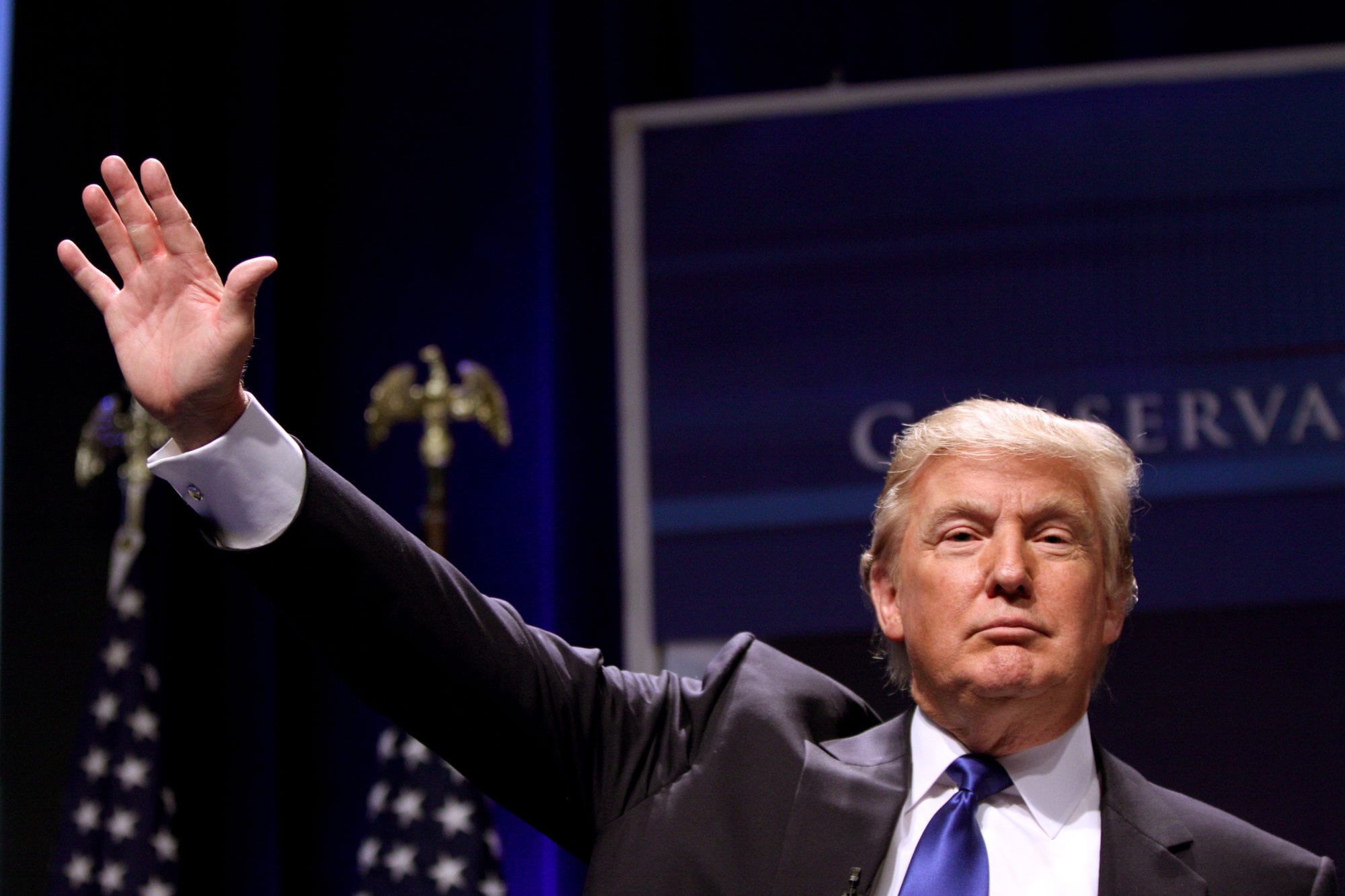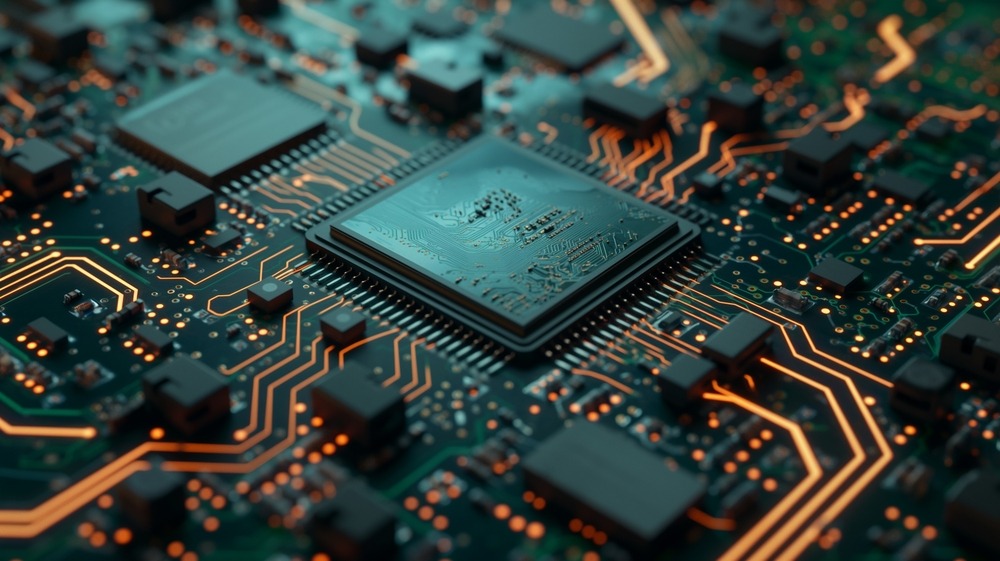What Are Semiconductors—and Why Is Trump Targeting Them?
President Donald Trump is preparing to roll out another wave of sweeping tariffs, this time setting his sights on semiconductors—those tiny but critical components that power just about every piece of modern technology.
From smartphones to medical devices, semiconductors are the hidden workhorses of our digital lives. But why are they suddenly at the centre of America's latest trade crackdown?

What Exactly Is a Semiconductor?
Semiconductors—also called microchips or integrated circuits—are small slices of materials like silicon that are engineered to sometimes conduct electricity and sometimes not. This duality allows them to act as switches, forming the backbone of all digital computing through binary code: the 0s and 1s that power software and hardware alike.
RELATED: ‘Good Chance’ of US-UK Trade Deal, Says Vance—But at What Cost?
These chips aren’t just in computers and phones. They’re in cars, kitchen appliances, airplanes, and even your TV remote. They're the lifeblood of routers, cell towers, and nearly every internet-connected device.
They're also critical for renewable energy technologies like wind turbines and solar panels, and in healthcare they’re found in implantables like pacemakers and insulin pumps.

Who Makes Them?
One name dominates the world of chip manufacturing: Taiwan Semiconductor Manufacturing Company (TSMC). This single company produces more than half of the world’s supply of semiconductors and counts heavyweights like Apple, Microsoft, and Nvidia among its clients.
The US, UK, Europe, and China all rely heavily on Taiwan’s output, which has made semiconductors a flashpoint in the ongoing tech and trade conflict between Washington and Beijing.

Why Is Trump Targeting Semiconductors?
At the heart of Trump’s strategy is a goal to bring more manufacturing back to US soil. The president has long argued that the United States has outsourced too much, particularly in critical technology sectors.
"We want to make our chips and semiconductors and other things in our country," Trump said while speaking to reporters aboard Air Force One.
Although smartphones, computers, and certain electronics were recently exempted from new 125% tariffs on Chinese imports, Trump signaled that semiconductors might be next on the list.
RELATED: Global Markets Rise as Trump Announces Temporary Tariff Exemptions.
The move is also being driven by national security concerns. The White House has announced that semiconductors will be part of a broader investigation into the electronics supply chain.
"We are taking a look at semiconductors and the whole electronics supply chain in the upcoming National Security Tariff Investigations," Trump wrote on his platform Truth Social.
He added that the US must not be "held hostage" by foreign suppliers like China—a sentiment that reflects growing fears over geopolitical tensions in the Taiwan Strait and the US's dependence on overseas manufacturing.

Can the US Actually Make More Chips?
The US is trying. Through the CHIPS Act and other legislation, Washington has invested billions to boost domestic semiconductor production.
One notable win came when TSMC agreed to build a massive facility in Arizona. In return, the US government awarded the company $6.6 billion in funding to support its expansion.
But getting those factories online hasn’t been easy. TSMC faced major delays due to a shortage of qualified US workers. According to reports, they ultimately had to fly in thousands of engineers from Taiwan to get construction back on track.
That staffing issue isn’t unique. Building a robust semiconductor industry in the US isn’t just about money—it’s about expertise. And right now, much of that talent is concentrated overseas.

What Happens Next?
With Trump ramping up trade tensions and hinting at further tariffs, it’s clear that semiconductors are no longer just an economic asset—they’re a geopolitical bargaining chip.
If the US follows through with steep tariffs on imported chips, it could drive up costs for consumers and companies alike. It could also complicate already delicate relationships with allies like Taiwan and trading partners in Europe and Asia.
RELATED: Trump Exempts Smartphones and Laptops from Tariffs in Sudden Tech Reprieve.
Meanwhile, domestic production efforts face uphill battles, from workforce shortages to the sheer complexity of chip fabrication. Rebuilding a supply chain that took decades to offshore won't happen overnight—and doing it in the middle of a global tech arms race only adds to the pressure.

A Concerning Outlook
Semiconductors may be small, but the stakes around them are enormous. As the US edges closer to imposing tariffs on a product it still heavily imports, there’s a real concern that this approach could backfire. Disruptions in the chip supply chain risk affecting not just consumer electronics but healthcare systems, transportation, renewable energy, and national security itself.
Trump’s plan to revive US manufacturing might be rooted in legitimate concerns, but as the world grows more connected and dependent on tech, unilateral moves could fracture the delicate balance of global trade. It’s troubling that the very people whose policies and decisions helped create this fragile situation are now the ones calling the shots—framing themselves as the ones to fix it.
The question is: at what cost?










